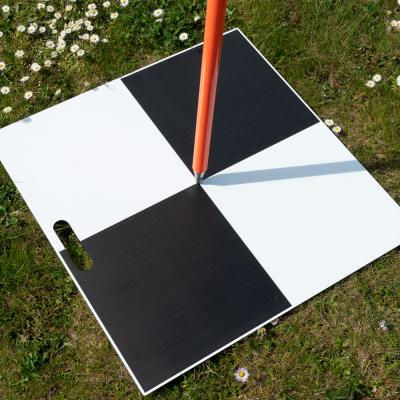Enhancing Object Tracking and 3D Mapping
- Adam
- Sep 1
- 2 min read
Updated: Sep 3
In the world of robotics, augmented reality (AR), and computer vision, precise object detection and spatial awareness are critical. One powerful tool making this possible is object tracking markers. These small, square fiducial markers play a big role in ensuring accurate tracking, mapping, and positioning across multiple industries.
What Are object tracking Markers?
These markers are unique, black-and-white square patterns that function like QR codes but are optimized for precise localization. When a camera or sensor scans a marker, it can determine its position and orientation in 3D space. This makes them ideal for applications where accurate measurement and alignment are essential in photogrammetry and marker-based tracking systems.

Why They Matter in Object Tracking
1. High Precision Recognition
Unlike standard markers, these are designed for high detection accuracy, even in challenging conditions such as low light or partial obstruction. This makes them perfect for robotics, where machines must understand their surroundings in real time.
2. Fast and Reliable Detection
Computer vision systems equipped with detection algorithms can quickly identify the markers and calculate their 3D position. This speed is crucial for dynamic applications like drone navigation, autonomous vehicles, or machine vision applications in AR-based gaming.
3. Versatility Across Industries
These markers are not limited to one field. They are used in:
Robotics – for navigation and precise movement.
Augmented Reality – to anchor digital objects in physical space.
3D Mapping – to create accurate models of environments.
Geospatial Analysis – improving alignment in drone surveys and mapping projects.
Applications in 3D Mapping
Improved Accuracy for Spatial Data
In mapping environments, even minor errors can lead to flawed models. Object tracking markers act as reference points, ensuring that captured images and depth data align perfectly with real-world coordinates in drone mapping and surveying.
Cost-Effective Calibration Tool
Because these markers are easy to print and deploy, they provide a cost-effective way to improve spatial calibration compared to expensive tracking systems or specialized survey control points.
Future of These Markers
As robotics and AR technologies continue to advance, the demand for precise localization
will grow. With their accuracy and affordability, these markers are expected to play a vital role in:
Industrial automation
Advanced drone navigation
Medical imaging
Mixed reality environments
AR/VR development and spatial computing
Final Thoughts
Though simple in appearance, these markers have a significant impact on object tracking and 3D mapping. They offer precision, speed, and reliability—key factors for industries that rely on accurate spatial data. As technology evolves, they will continue to drive innovation in computer vision, robotics, and beyond.


Comments